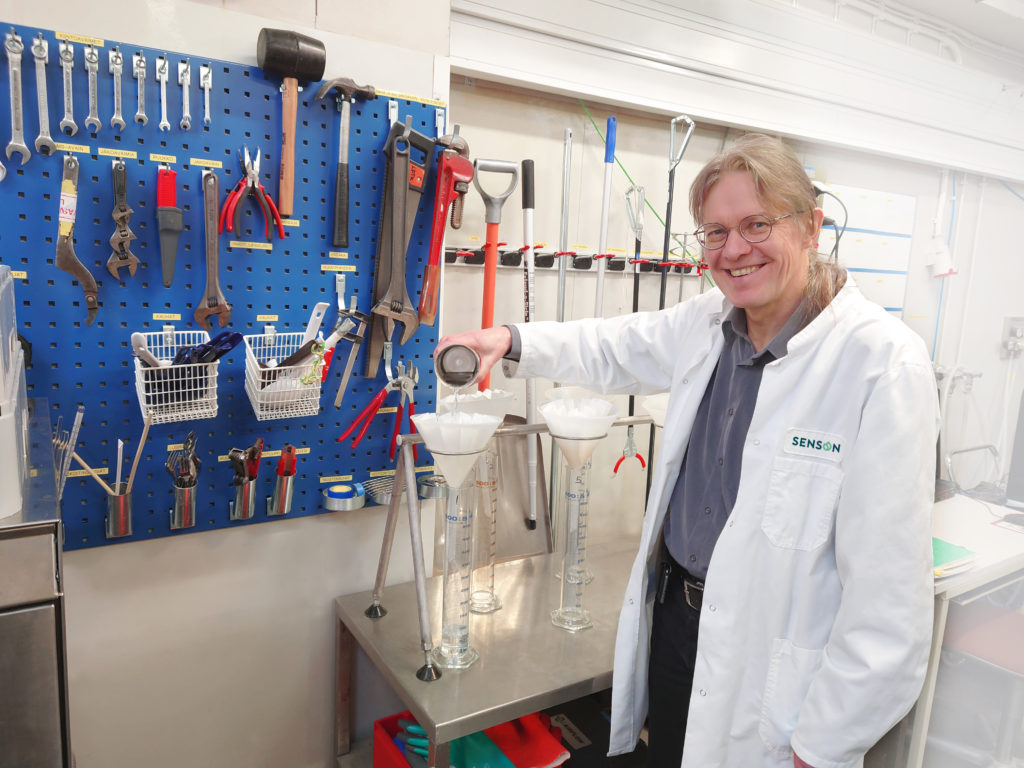Value-added products from field to tables since 1993
Petri Peltola, who works as Research and Development Manager at Senson, will retire next summer after working almost precisely for 29 years in the R&D of Senson and its predecessors. The theme of the career, which began at Polttimo in 1993, has been the expertise in microbiology for malt and malt extracts.
- During high school, my favorite subjects were chemistry, biology, and maths. Based on those, the options for profession were a researcher and a teacher. I chose research, i.e. microbiology combined with technology, and I ended up on the path of applied micrology, Peltola recalls.
After his long career, Peltola plans as a retiree to focus on chores at home and summer cottage, and on his music hobby, which has continued since he was a little boy. Peltola still plays in two bands.
In collaboration with Viking Malt
Through its networks, Senson is a bigger company than it first appears, and has a strong partnership with Viking Malt.
Extensive expertise in the food industry and the long tradition in research are a solid foundation, but the eyes are always towards the future. Trends and booms in the food industry reflect the daily life of product development, as sales, for example, also participate in the development. An idea of a new product development may well arise from a customer’s wish or from product feedback, or a rising trend elsewhere in the world.
Many requirements steer product development
What qualities should a product developer have? Naturally, field knowledge and chemistry are basic things. Peltola reminds that it usually takes 1-2 years to complete a product development project, so perseverance helps. In addition to meeting the requirements of different stakeholders, for example in terms of production processes, there are many environmental, safety and quality requirements involved.
- Systematic approach is required, as there are often many projects underway simultaneously, and many details need to be reviewed during each. For example, product safety is highly important.
Adding value
But let’s get back to the trends and booms. Senson’s malt enzyme was originally developed as a processing aid for a starch syrup. The life cycle of the product almost faded and ended, but got a new boost from the oat drinks trend. It is also an example of a product that was returned to the R&D drawing board for further development due to new customer requirements.
- For me, the Betalase malt enzyme is a fine example of a Senson product, which adds value to customers’ production and products. A strong indication of this is that the product has been in the range since the 80s.
How about the growing demand for gluten-free products? How did the tasteless bakery products turn into a still growing demand product? Peltola says that the development of gluten-free products began more than 10 years ago, although both demand and supply were low. People suffering from celiac disease were “forced” to eat gluten-free but tasteless bread. Overall, gluten-free products have developed a lot in recent years with the growth of consumption. The expansion of the customer base to non-celiac consumers has also increased the demand. Senson addressed the demand by developing gluten-free extracts that improve taste, nutritional value and texture.
The product developer Peltola predicts that the vegetarian food boom will become even stronger. It is fueled by the growing interest in health-promoting diets and environmental considerations. One line of research in product development may well be to focus on exploiting the very specific, healthy plant components.
Practical lessons and applied knowledge
Practical lessons Petri Peltola has drawn from his youth, from summer jobs at the grassroots level, in gardens and fields. Versatile summer work from a dairy to wastewater treatment and early job descriptions accumulated expertise and a foundation for a future career in malt and extracts. Although the basics of chemistry and microbiology have not changed much over time, the working methods have evolved. As in many other fields, the need for manual work has decreased. Also, processing and absorbing all the available information requires new kind of competence.
- Today, there are a lot of sources of information, and the amount of information is huge. It is important to recognize the reliable information and to be able to find information that is relevant to the job, reminds Peltola.
One more tip Peltola has: Familiarize yourself with microscopes. This is a recommendation for all those who are considering microbiology as a profession, to learn to see under the surface.


